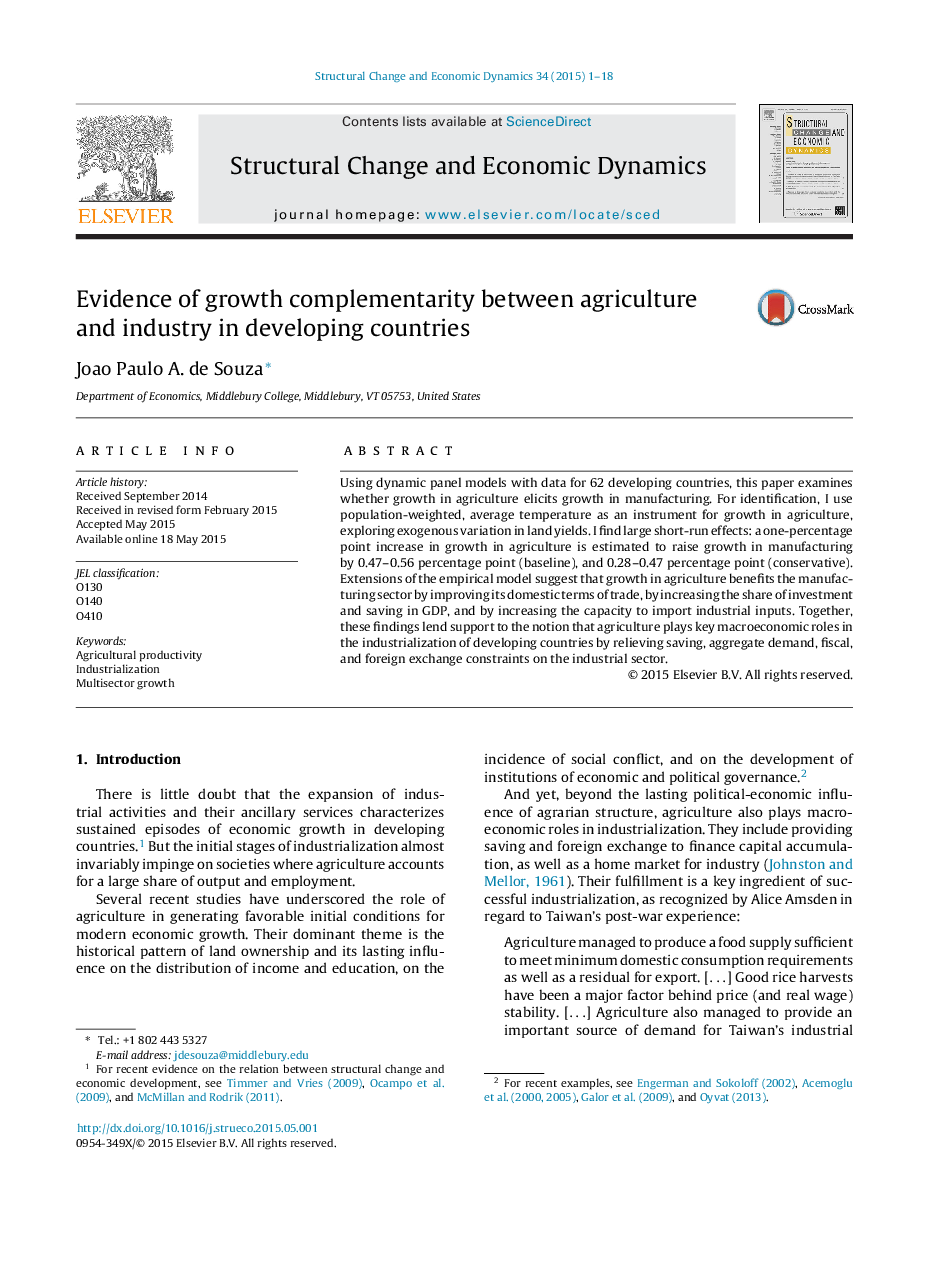| Article ID | Journal | Published Year | Pages | File Type |
|---|---|---|---|---|
| 986875 | Structural Change and Economic Dynamics | 2015 | 18 Pages |
•This paper examines whether growth in agriculture elicits growth in manufacturing.•It uses a baseline sample of 62 developing countries and a dynamic panel data model.•It uses population-weighted temperature as an instrument for growth in agriculture.•The effects of agricultural growth on industrial growth are positive and robust.•Extensions suggest plausible macroeconomic mechanisms of complementarity.
Using dynamic panel models with data for 62 developing countries, this paper examines whether growth in agriculture elicits growth in manufacturing. For identification, I use population-weighted, average temperature as an instrument for growth in agriculture, exploring exogenous variation in land yields. I find large short-run effects: a one-percentage point increase in growth in agriculture is estimated to raise growth in manufacturing by 0.47–0.56 percentage point (baseline), and 0.28–0.47 percentage point (conservative). Extensions of the empirical model suggest that growth in agriculture benefits the manufacturing sector by improving its domestic terms of trade, by increasing the share of investment and saving in GDP, and by increasing the capacity to import industrial inputs. Together, these findings lend support to the notion that agriculture plays key macroeconomic roles in the industrialization of developing countries by relieving saving, aggregate demand, fiscal, and foreign exchange constraints on the industrial sector.
